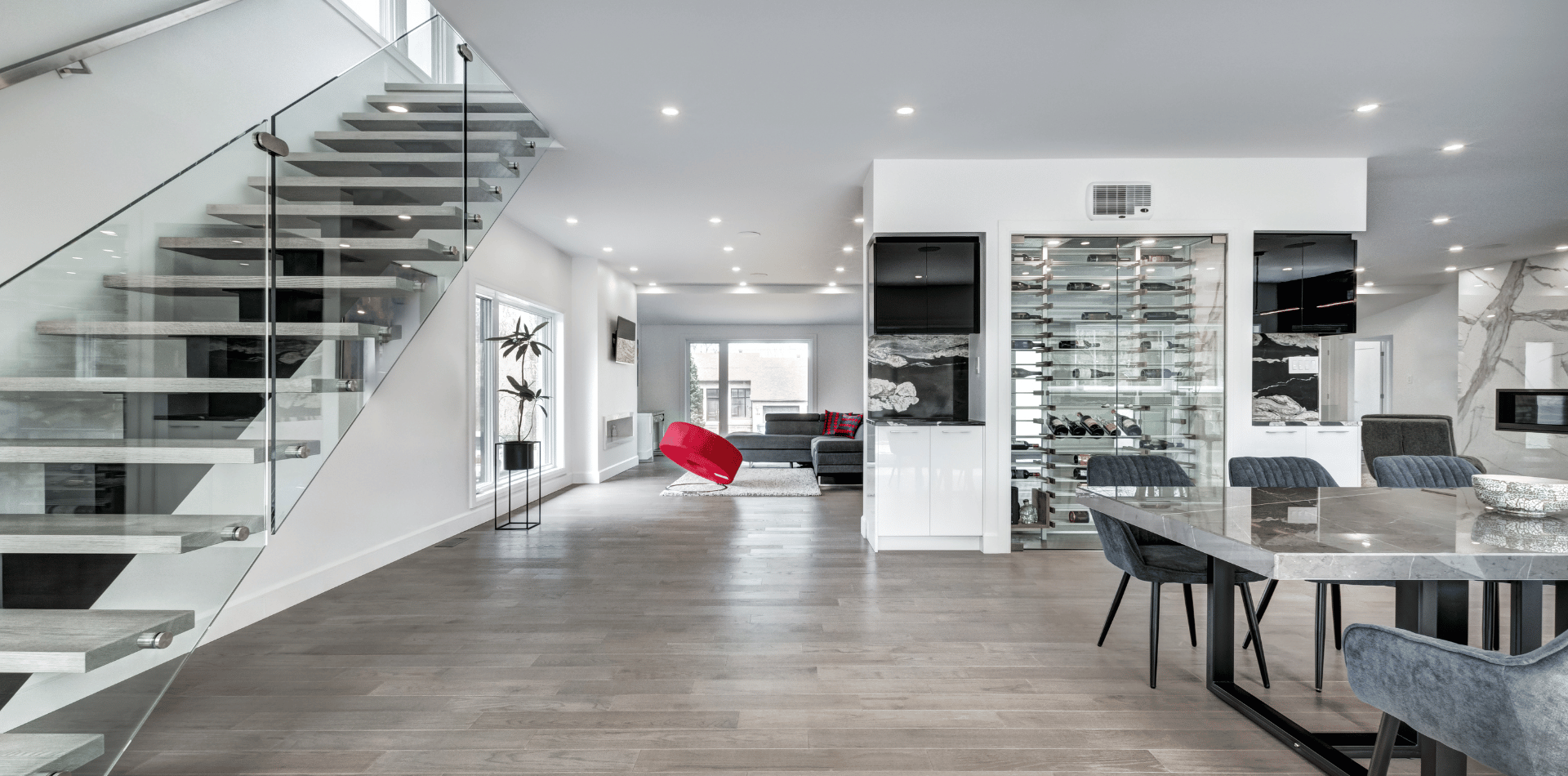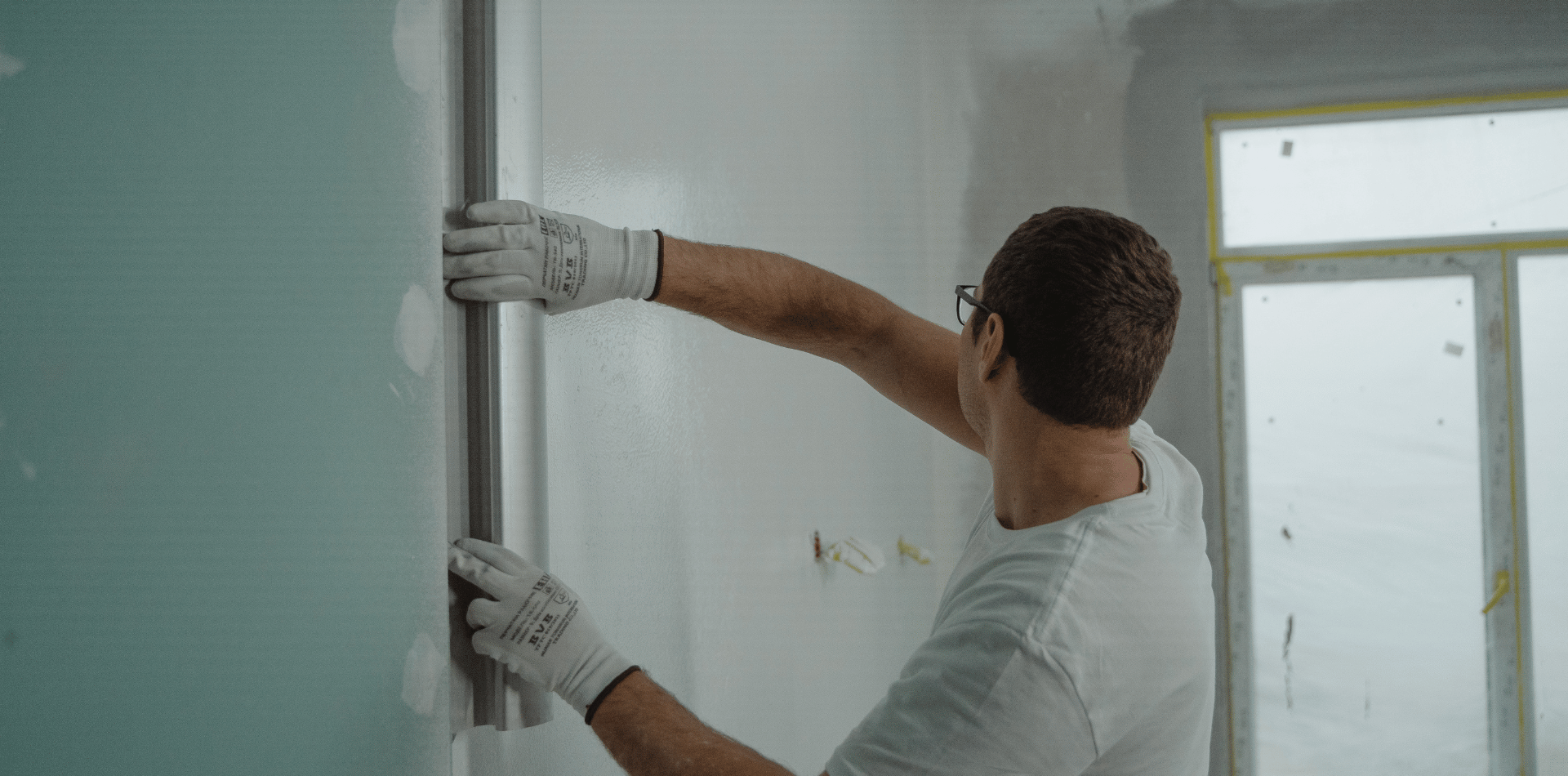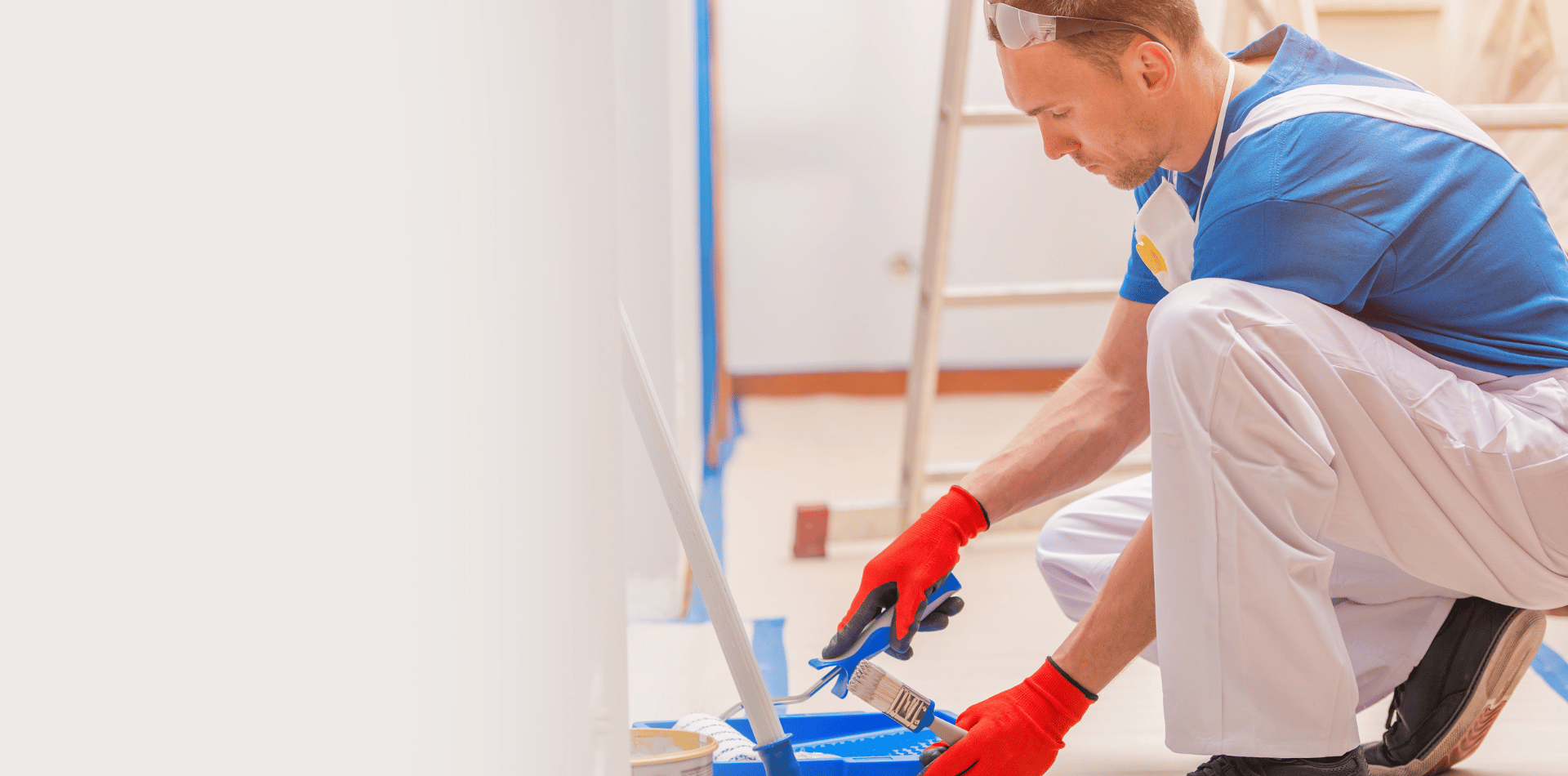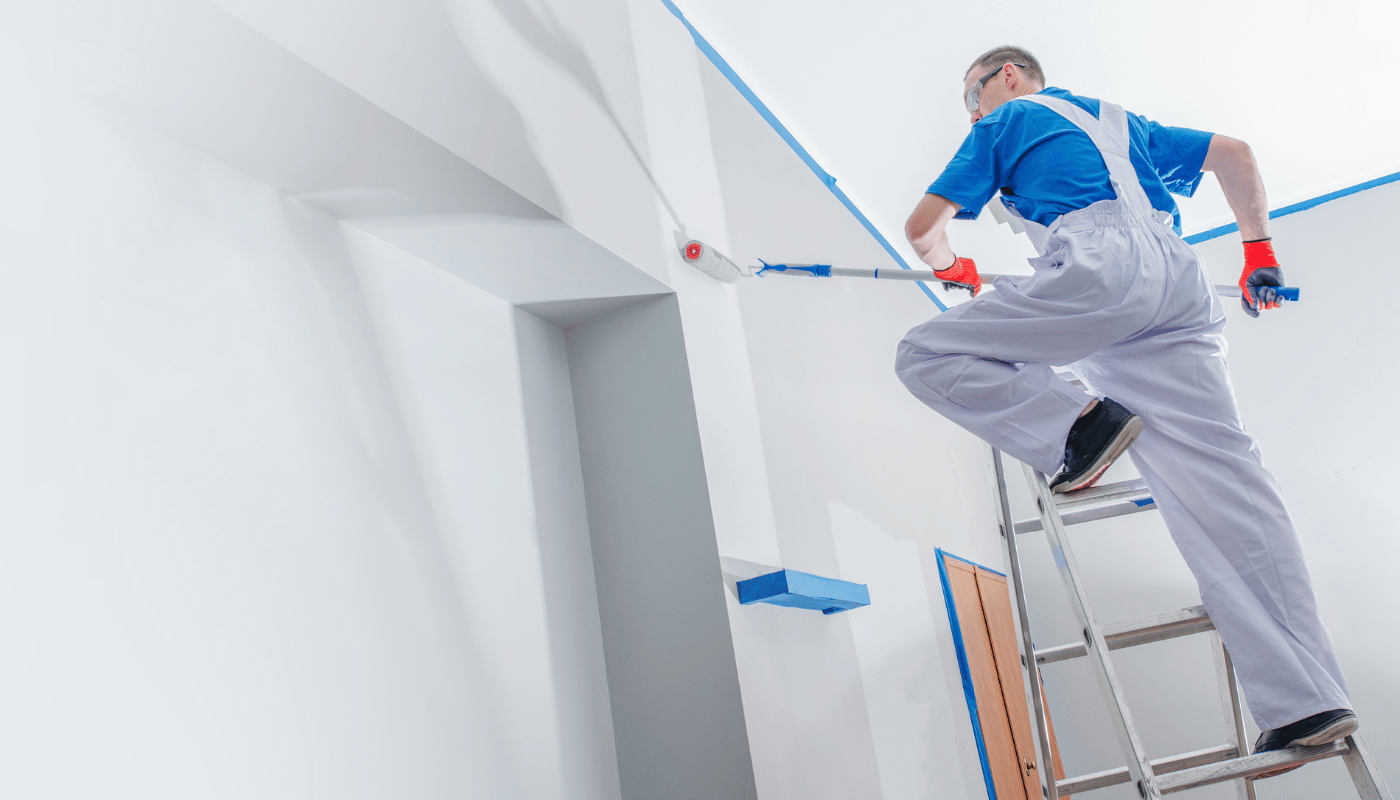A Brush with Excellence: Behind the Scenes of a Professional House Painting Crew

Setting the Stage for Excellence in House Painting
When envisioning a freshly painted room or a beautifully transformed exterior, the vibrant colours and flawless finish are the first elements that come to mind. Yet, beneath this visual spectacle lies a world of meticulous preparation, skilled techniques, and teamwork that brings the vision to life.
We will embark on a journey behind the scenes of a professional house painting crew, exploring the artistry, science, and dedication that go into creating impeccable and enduring results.
From the first stroke of the brush to the final flourish, every step is a testament to the pursuit of excellence.
1: The Art of Preparation
The Critical Role of Preparation in Professional House Painting
Preparation is the cornerstone of anything, particularly a successful house painting project.
It's the foundation upon which the quality and longevity of the final result are built.
Before a single drop of paint is applied, professional painters engage in a thorough process that ensures surfaces are clean, smooth, and ready to receive the transformative touch of colour.
From addressing imperfections to priming surfaces, each step in the preparation process is executed with precision and care, setting the stage for excellence.
Starting with a Clean Canvas: Importance of Surface Cleaning
Imagine trying to paint a masterpiece on a canvas covered in dust and grime—it's a recipe for disappointment.
The same principle applies to house painting. Professional crews begin by meticulously cleaning surfaces, removing dirt, dust, grease, and other contaminants. This essential step not only ensures a clean foundation for paint but also enhances adhesion, preventing issues like peeling and chipping down the line.
With every surface clean and ready, the paint can adhere smoothly and evenly.
Addressing Imperfections: Repair and Patching Techniques
Even the most well-maintained surfaces can have imperfections that need to be addressed before painting.
Professional painters inspect surfaces for cracks, holes, and dents, skillfully patching them with filler. This attention to detail creates a seamless canvas, free of blemishes that could affect the paint's finish.
Sanding the patched areas further contributes to a smooth and even surface, ensuring that the final result is nothing short of perfection.
Creating a Smooth Surface: The Science of Sanding
Sanding is an art in itself—a delicate balance between removing imperfections and preserving the integrity of the surface. Professional painters utilise sandpaper of varying grits to achieve a smooth texture that allows the paint to adhere evenly. This step not only smooths out rough spots but also promotes paint adhesion, resulting in a flawless finish. The final pass with fine-grit sandpaper is like the finishing touch of a sculptor, refining the surface to perfection.
The Magic of Priming: Enhancing Paint Adhesion and Uniformity
Priming is the secret weapon in a professional painter's toolkit.
A primer serves as the bridge between the surface and the paint, enhancing the adhesion and ensuring uniform colour and sheen. Professional crews know that priming is particularly crucial for surfaces that have never been painted or have undergone significant repairs. This step sets the stage for vibrant colours, even coverage, and a finish that stands the test of time.

2: Tools of the Trade
Unveiling the Arsenal: Essential Tools for a Professional House Painting Crew
Just as a chef relies on high-quality knives and utensils, a professional house painting crew relies on an array of specialised tools to achieve exceptional results.
From brushes to rollers, scrapers to sandpaper, these tools are the extensions of a painter's expertise. The selection of tools is based on the type of surface, the desired finish, and the intricacies of the project. Investing in quality tools ensures smoother application, consistent coverage, and a professional touch.
Brushes, Rollers, and More: Choosing the Right Applicators
Selecting the right brushes and rollers is akin to choosing the right brushes for a masterpiece.
Professional painters understand the nuances of different brush and roller types, using them to achieve specific effects and finishes.
Brushes are chosen based on the type of paint and surface, while rollers come in various textures to accommodate different surfaces and desired textures.
These tools, wielded with skill, create the seamless and even finish that defines professional work.
Beyond Basics: Advanced Tools for Precision and Efficiency
Beyond brushes and rollers, professional painters utilise advanced tools that elevate the quality and efficiency of their work. Paint sprayers, for instance, are used for large surfaces and intricate details, providing a uniform finish in less time. Painter's tape is another indispensable tool that ensures clean lines and prevents paint bleed.
The inclusion of these advanced tools in a painter's toolkit highlights the commitment to precision and mastery.
3: The Masterful Techniques
Brushstrokes of Excellence: Techniques for Achieving Smooth and Even Paint Application
Paint application is where the artistry truly shines.
Professional painters have mastered techniques that result in smooth, even coats of paint.
The "W technique" is a fundamental approach—painters apply paint in the shape of a "W" and then fill it in with horizontal strokes. This method ensures consistent coverage and minimises visible brush marks.
The "crosshatch technique" involves applying paint first vertically, then horizontally, for an exceptionally smooth and streak-free finish.
Navigating Tight Spaces: Strategies for Painting Tricky Areas
A professional painting crew doesn't shy away from tight spaces or intricate details.
Instead, they embrace these challenges with strategies that ensure even coverage and precision.
When painting corners or edges, painters use a technique called "cutting in," which involves using a brush to create a clean and straight line where two surfaces meet.
This technique, when executed with skill, prevents uneven edges and creates a polished look.
The Perfect Finish: Achieving Uniform Coverage and Sheen
A flawless finish is the hallmark of professional work.
Achieving uniform coverage and sheen requires an understanding of paint consistency, brush pressure, and technique. Professional painters ensure that each stroke of the brush results in consistent colour and sheen, avoiding uneven patches and variations.
The result is a finish that is not only visually stunning but also stands up to scrutiny from every angle.

Section 4: Teamwork and Coordination
Behind Every Stroke: The Collaborative Effort of a Professional Painting Crew
A painting crew is more than just a group of individuals—it's a team united by a shared commitment to excellence.
Professional painters work seamlessly together, utilising their skills to enhance one another's efforts.
From preparation to application to cleanup, every member of the crew plays a vital role in the success of the project. This collaborative spirit ensures a smooth and efficient painting process, where every stroke of the brush is a collective endeavour.
From Prep to Cleanup: Coordinating Tasks for Efficiency
Efficiency is at the heart of a professional painting crew's approach.
Time is maximised, and tasks are streamlined through careful coordination. While one painter might be tackling the preparation, another could be setting up the tools and mixing paint.
During the painting process, the coordination continues, with tasks divided to ensure even coverage and smooth transitions.
This orchestration of efforts results in a painting process that is not only efficient but also produces consistent and high-quality results.
Communication is Key: Ensuring a Seamless Painting Process
Effective communication is the glue that holds a painting crew together. From discussing colour choices with clients to coordinating tasks with fellow painters, communication ensures that everyone is on the same page. Painters communicate about techniques, progress, and any unforeseen challenges that arise. This open dialogue ensures that the project proceeds smoothly and any adjustments can be made in real-time, resulting in a seamless and stress-free painting process.
5: Colour Consultation and Selection
The Art of Colour: How Professional Painters Assist with Selection
Selecting the right colours can be an overwhelming task for homeowners.
Professional painters step in as colour consultants, guiding clients through the spectrum of possibilities. They consider factors such as room lighting, existing decor, and personal preferences to recommend colors that harmonise with the space.
This expertise ensures that the chosen colours not only reflect the homeowner's style but also create a cohesive and inviting environment.
Navigating Trends: Advising Clients on Timeless and Trendy Colour Choices
Trends in colour come and go, but professional painters offer insight into selecting hues that stand the test of time.
While trendy colours can add a contemporary touch, they might not remain appealing over the years. Professional painters strike a balance between current trends and timeless shades, ensuring that the painted space remains relevant and aesthetically pleasing for years to come.
Harmonising Spaces: Creating Cohesive Colour Palettes
A professional painting crew considers the bigger picture—how different rooms and spaces flow together in a home.
Creating a cohesive colour palette involves selecting colours that complement each other, ensuring a harmonious transition from one room to the next.
This skillful approach to colour selection enhances the overall aesthetic and ambiance of the home, creating a unified and visually pleasing environment.

6: Quality Control and Attention to Detail
The Unseen Craftsmanship: Quality Control Measures of a Professional Crew
Excellence is not just visible on the surface—it's also ingrained in the craftsmanship that goes unseen.
Professional painting crews implement rigorous quality control measures to ensure that every detail meets their standards.
This involves regular inspections, touch-ups, and adjustments to guarantee a finish that surpasses expectations.
Inspecting Every Inch: Ensuring a Flawless Finish
Professional painters leave no stone unturned when it comes to inspecting their work.
Every inch of the painted surface is scrutinised for imperfections, streaks, or uneven patches. This meticulous inspection allows them to identify any areas that might need additional attention or touch-ups.
By addressing these issues before the project is considered complete, professional crews maintain their reputation for delivering impeccable results.
Addressing Concerns: Nipping Potential Issues in the Bud
During the painting process, unexpected challenges can arise—a wall may not take paint as expected, or colour might look different when applied.
Professional painters are equipped with experience and expertise to address these concerns swiftly and effectively.
Whether it's adjusting paint formulas, reevaluating techniques, or consulting with clients, their ability to adapt ensures that the project remains on track and the final result meets the highest standards.
7: Environmental Responsibility
Beyond Aesthetics: Professional House Painters and Eco-Friendly Practices
In an era where environmental responsibility is paramount, professional house painters have embraced sustainable practices that extend beyond aesthetics.
These painters prioritise environmentally friendly paint choices, waste reduction, and responsible disposal methods.
Their commitment to both the visual outcome and the planet's well-being showcases a holistic approach to their craft.
Sustainable Selections: Opting for Low-VOC and Eco-Friendly Paints
Professional painters are well-versed in the environmental impact of paint choices.
To minimise harmful emissions and indoor air pollution, they recommend low-VOC (volatile organic compounds) and eco-friendly paints. These paints use water-based solvents or alternative technologies to reduce the release of toxic chemicals into the air.
The result is a beautiful finish that enhances the indoor environment without compromising air quality.
Waste Management: Proper Disposal and Recycling of Painting Materials
The responsibility of a professional painter doesn't end with the final brushstroke.
Proper disposal and recycling of painting materials are essential components of their commitment to sustainability. Paint cans, brushes, rollers, and other materials are disposed of responsibly, following local regulations and recycling guidelines.
This holistic approach to waste management ensures that the environmental impact of their work is minimised from start to finish.

8: The Finishing Touches
Adding Final Flourish: Tackling Trim, Mouldings, and Details
The final touches are where the magic comes together.
Professional painters pay meticulous attention to trim, mouldings, and other details that frame the painted areas. Precise brushwork ensures clean lines and a polished look. The addition of these finishing touches enhances the overall aesthetic and creates a sense of completeness that leaves a lasting impression.
Removing Tape, Replacing Fixtures: The Final Steps to Completion
As the project draws to a close, professional painters take care of the final details that signal completion.
Painter's tape is carefully removed to reveal crisp edges and clean lines. Fixtures and decor are replaced, giving the room its final touches.
This stage marks the transition from a work in progress to a fully transformed space—a testament to the skill and dedication of the professional painting crew.
The Tapestry of Mastery:
The Artistry and Craftsmanship of Professional House Painters
A professional house painting crew is more than a collection of individuals wielding brushes and rollers—it's a symphony of expertise, technique, and passion.
From the art of preparation to the orchestration of teamwork, every element contributes to a seamless process that results in impeccable results. The dedication to quality, sustainability, and environmental responsibility underscores the craftsmanship that goes into every brushstroke.
When you gaze upon a freshly painted room or admire a flawlessly transformed exterior, know that the beauty you see is the culmination of an intricate dance of skill, dedication, and a brush with excellence.
FAQ
Q1: Can I skip the preparation phase and just start painting?
Skipping the preparation phase can lead to disappointing results. Proper preparation ensures that paint adheres well, dries evenly, and maintains its finish over time. It's the foundation of a successful painting project.
Q2: Why is using quality tools important for painting?
Quality tools contribute to smoother application, consistent coverage, and a professional finish. High-quality brushes, rollers, and other tools make a noticeable difference in the overall outcome of your project.
Q3: How do professional painters achieve even coverage and smooth finishes?
Professional painters use techniques like the "W technique" and "crosshatch technique" to achieve smooth and even paint application. These methods ensure consistent coverage and minimise visible brush marks.
Q4: What is the role of teamwork in a professional painting crew?
Teamwork is essential in a painting crew. Each member plays a vital role in the success of the project, from preparation to application to cleanup. Collaboration ensures a smooth and efficient process.
Q5: How do professional painters assist with colour selection?
Professional painters offer colour consultation, considering factors like room lighting and existing decor to recommend colours that harmonise with the space. They strike a balance between trends and timeless choices.
Q6: Can professional painters address unexpected issues during painting?
Yes, professional painters are equipped with experience to address unexpected challenges swiftly. They can adjust techniques, formulas, or consult with clients to ensure the project remains on track.
Q7: Why is environmental responsibility important in painting?
Environmental responsibility ensures that painting projects have a minimal impact on the environment and indoor air quality.
Low-VOC and eco-friendly paint choices contribute to healthier living spaces.
Q8: How do professional painters ensure a flawless finish?
Professional painters inspect every inch of their work, identifying imperfections, streaks, or uneven patches. This meticulous attention to detail ensures a finish that meets the highest standards.
Q9: What are some advanced tools professional painters use?
Professional painters use advanced tools like paint sprayers for large surfaces and painter's tape for clean lines. These tools enhance efficiency and precision in their work.
Q10: How do professional painters ensure proper waste disposal?
Professional painters follow local regulations and recycling guidelines to ensure proper disposal and recycling of painting materials, minimising the environmental impact of their work.





